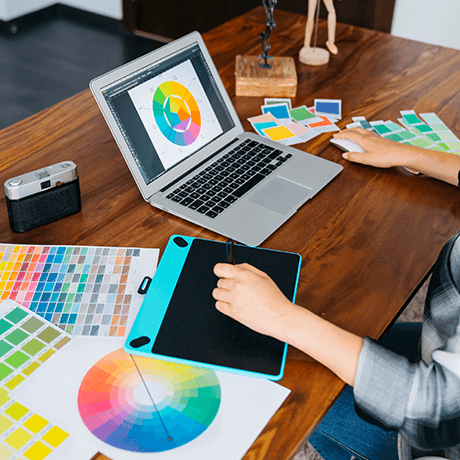
Biomimicry in Design - Takeaways for a designer
April 19th, 2017 Posted by BIomimicry Web Design and Development 0 thoughts on “Biomimicry in Design - Takeaways for a designer”A lot discussion is being done today, on coming up with new designs which are sustainable and functional. The designs which can adapt the harsh changes, create awareness and build a strong framework. Such designs require a good inspiration and use of derivative of facts.
Why to go to other directions for inspiration, when we have our mother nature around.
So, here is the term for the nature inspired design. Biomimicry. Below I have discussed examples for UI/Graphic Designers, Product Designers and Architects, how they have used it and future possibilities. But first, lets understand what Biomimicry is!
Biomimicry Institute defines
‘’Biomimicry/Biomimetic as an approach to innovation that seeks sustainable solutions to human challenges by emulating nature’s time-tested patterns and strategies.’’
But one can always investigate why should we use it? Here is the answer. Following are the points of advantages that Biomimicry brings along with it :
Experience
The whole concept of getting inspired from nature brings with it ‘more than a million year of evolution’ it has gone through. The solutions that nature has produced for its various processes have been tested by the various forces of nature itself. With the addition of our research we can add to find the perfect design solution.
Sustainability
The designs through the biomimicry inspiration would produce adaptive, visually suitable and least energy consuming solutions. Nature also has changed its processes for the same problem. Their testimonial is the effective presence of that process emulated throughout the timeline.
The consumption of resources is also optimized in the natural processes. Thus, sustainability is embedded in evolving designs from the nature.
Biomimicry is … the conscious emulation of life’s genius.
Janine Benyus
Here are some examples where biomimicry has helped designers in the past and what are the future possibilities :
Graphics and UI
When Leonardo da Vinci turned towards the nature for inspiration, he brought revolution. Today many graphic designers and UI designers use Fibonacci series and Golden Ratio born out of nature to produce visually appealing graphics.
In future, with hyperlapse and slow motion videography readily available now, I can see someone coming up with ideas for UI transitions and motion typography inspired from flower budding process, sunrise and sunset, motion of a water drop or movement of stars. Possibilities are endless.
Product Design
Product designers have already seen a famous example of bullet train design. They had turned to ‘kingfisher bird’ to come up with solution for thunder-like cracking due to pressure difference experienced by high speed trains while entering the tunnels. This is just one example, there are many more around you.
Did you know the famous velcro sticking technique was inspired by dog’s hairs.
In future, we can see fuel-less airplanes, if there comes technology to imitate fluttering of wings as birds do. Or the possibility of an ‘invisibility or adaptive cloak’ inspired by chameleon cannot be ignored
Architecture
Architecture fraternity has already witnessed a master work done by engineering firm Arup in Zimbabwe. They studied the ‘local termite mounts’ to come up with ‘ventilation technique’inspired by the mechanism of cooling which keeps termites cool in the hottest of days. The building is called Eastgate Centre located in the city of Harare, Zimbabwe.
Architects have already adopted natural forms for their buildings. But there are many natural habitats like beehives and wasps’ nest, which can give rise to effective designs for new affordable and futuristic housing.
With this article I aim to create awareness for designers to look around and find solutions from the nature within. For more inspiration you can hear the TED Talk by Janine Benyus : Biomimicry in Action
Credits:
Author: Archknow
Source: https://medium.muz.li/biomimicry-in-design-takeaways-for-a-designer-8e2c537b7a78


